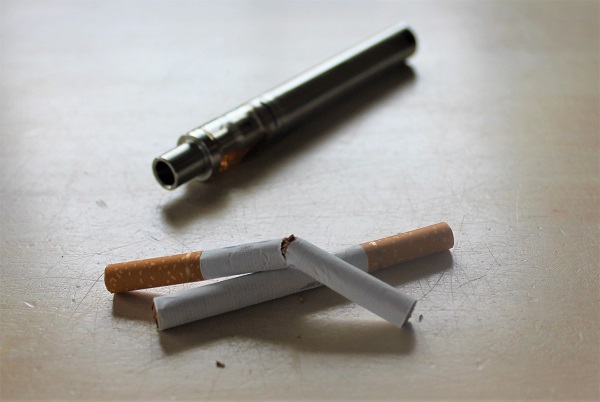Unintended Consequences
- Regulation
- August 21, 2019
- 5 minutes read

Photo: Timothy S. Donahue
A new study suggests anti-vaping measures may achieve the opposite of their objectives.
By Marina A. Murphy
Regulation is supposed to encourage good behavior for the public good. But sometimes it just doesn’t. Sometimes it has the opposite effect. Like naughty children, if you tell us we should do one thing, we will just go ahead and do the opposite.
There have been a number of studies showing that when it comes to vaping, it’s no different. According to a study from the Yale School of Public Health, U.S. states that banned e-cigarette sales to minors in a bid, presumably, to drive these youngsters toward a nicotine-free lifestyle instead drove an increase in smoking in 12-year-olds to 17-year-olds. A Cornell study showed that increasing the vaping age had the effect of increasing smoking in youth—but then it really shouldn’t be surprising that if you make access to something difficult, people will turn to something else. Now a new study from Duke University suggests that misguided regulations on e-cigarettes could not only potentially negatively impact the group they were developed to protect but others as well.
This latest study suggests that the effect of restricting access and availability of e-cigarettes in an effort to discourage youth vaping could have the unintended consequence of driving existing vapers back to smoking. Clive Bates, a well-known advocate of tobacco harm reduction, argues that not proactively assessing the potential unintended consequences of misguided regulations is professional negligence. And if this negligence leads to harm, “then it is a form of corporate manslaughter,” he says.
“The youth card is often played to justify dubious policies,” says Martin Cullip, chairman of the New Nicotine Alliance, a consumer advocacy group in the U.K. “So often, we see suggestions like banning e-cigarette flavors to discourage youth use—that is, of course, except the flavors traditionally associated with smoking (tobacco and menthol), the very activity we are supposedly trying to discourage. How does that make sense at all?” he asks.
Indeed, the results of the Duke University study revealed that almost one-fifth of respondents said that if e-cigarette flavors were to be restricted to tobacco and menthol, they would likely not use e-cigarettes as much, and they would smoke more conventional cigarettes. “Effectively, you would be throwing adult vapers under the bus,” Cullip says.
The Duke University researchers used on online survey to ask 240 participants aged 18 to 29 to predict their use of two products—e-cigarettes and traditional tobacco cigarettes, which they already used—in response to hypothetical regulations to limit e-cigarette flavors, limit the customizability of e-cigarettes or eliminate the nicotine in e-cigarettes.
About 47 percent said if regulations eliminated nicotine in e-cigarettes, they wouldn’t use e-cigarettes as much and would increase their use of traditional cigarettes. About 22 percent said if regulations limited the customizability of devices, such as features allowing users to adjust nicotine dose or vapor temperature, they would use e-cigarettes less and smoke more tobacco cigarettes.
“The FDA now has regulatory authority over all tobacco products, including e-cigarettes, and we know that some communities have taken action to ban flavored e-cigarette products,” said Lauren Pacek, the study’s lead author and an assistant professor in psychiatry and behavioral sciences at Duke University. “We wanted to take a first pass at seeing what users’ anticipated responses to new regulations might be,” she said. “Our findings suggest that while some regulations, such as banning certain flavors to limit appeal to adolescents, might improve outcomes for those young users, the new regulations might have unintended consequences with other portions of the population.”
But this study is small, and we are talking hypotheticals—that is, asking people what they might do in certain circumstances. “True,” says Cullip, “but the authors themselves have said that this study was not designed to predict behavior. They also say, however, that their data highlights the importance, when considering changes to e-cigarettes, of considering the downstream effects of new regulations on other users. And lest we forget, it was data from studies based on hypotheticals that were used to justify bringing in plain packaging,” he adds.

Marina A. Murphy
Marina A. Murphy is a scientific communications and engagement expert with more than 20 years of experience, including 10 years in the tobacco sector.